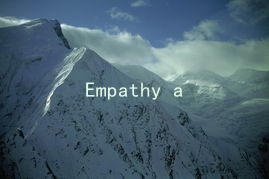The Science of Attraction: Using Scientific Models to Enhance Romantic Relationships
The Science of Attraction: Using Scientific Models to Enhance Romantic Relationships
In the complex world of romantic relationships, understanding attraction can be a game-changer. While love often feels like a mysterious force, science has given us valuable insights into what makes two people compatible. By leveraging scientific models, individuals can enhance their romantic relationships and navigate the intricacies of attraction more effectively.
One of the foundational theories of attraction is the Interpersonal Attraction Theory, which outlines various factors that influence how we are drawn to others. Proximity, for example, is a significant element in forming romantic relationships. The more we interact with someone, the more likely we are to develop feelings for them. This phenomenon can be traced back to the mere exposure effect, which suggests that repeated exposure to an individual increases our liking for them. Thus, fostering opportunities for shared experiences can strengthen emotional connections.
Another crucial aspect is the Similarity-Attraction Hypothesis, which posits that we are more likely to be attracted to those who share similar values, interests, and backgrounds. Similarity fosters a sense of understanding and comfort, which are integral to relationship satisfaction. Couples who engage in activities that reflect their common interests, whether it’s hobbies, cultural values, or even life goals, are often more successful in maintaining a strong bond. Therefore, finding common ground and celebrating shared passions can enhance the romantic connection.

The concept of Social Exchange Theory further illustrates the dynamics of attraction. This theory suggests that we weigh the costs and benefits of our relationships, seeking to maximize rewards while minimizing costs. In romantic partnerships, this translates to emotional support, companionship, and shared resources. To enhance attraction, individuals can focus on providing value to their partner, whether through acts of kindness, emotional availability, or simply making time for each other. By fostering an environment of mutual support and shared goals, couples can strengthen their emotional bond and satisfaction in the relationship.
Communication also plays a vital role in attraction and relationship maintenance. The Attachment Theory identifies different styles of attachment—secure, anxious, and avoidant—each influencing how individuals approach relationships. Understanding one’s own attachment style and that of a partner can lead to healthier communication patterns. For instance, secure individuals tend to communicate openly and involve their partners, fostering a deeper understanding of each other’s needs and fears. By actively working on communication skills and emotional transparency, couples can navigate conflicts more effectively and cultivate a sense of intimacy.
Moreover, emotional intelligence is a powerful tool in enhancing romantic relationships. Individuals who possess high emotional intelligence can better manage their own emotions and empathize with their partner’s feelings. This skill fosters strong connections and builds resilience against challenges. Couples can improve their emotional intelligence through mindfulness practices, open communication about feelings, and active listening, which are vital for maintaining attraction and closeness.
In conclusion, while attraction may often seem elusive, scientific models provide clarity on the factors that contribute to successful romantic relationships. By understanding the principles of proximity, similarity, social exchange, attachment styles, and emotional intelligence, individuals can enhance their relational dynamics. Investing time and effort into these areas not only enriches romantic connections but also lays a strong foundation for long-lasting partnerships. Ultimately, love may be a mystery, but with the right tools, we can decode its complexities and foster deeper connections with those we cherish.





